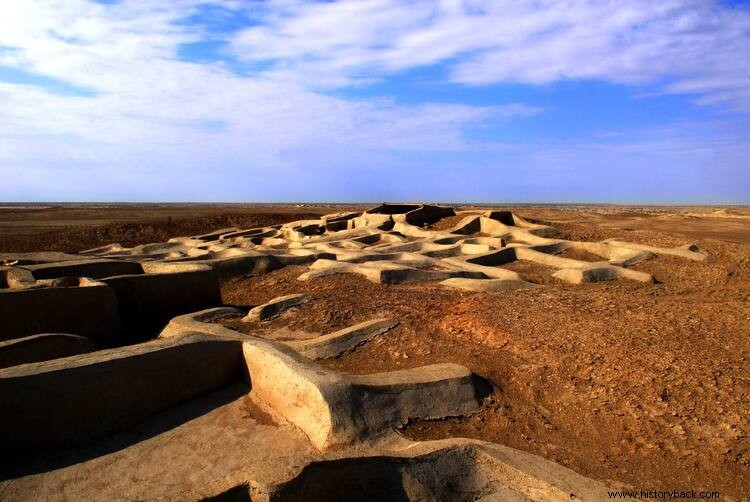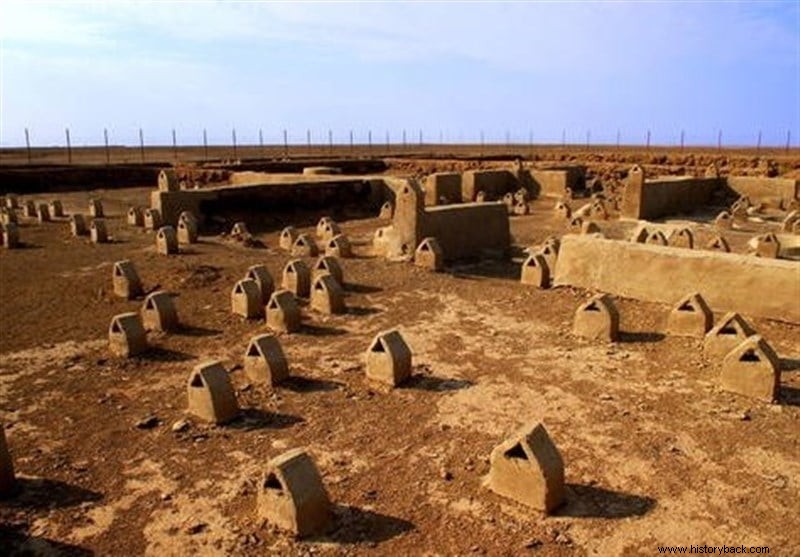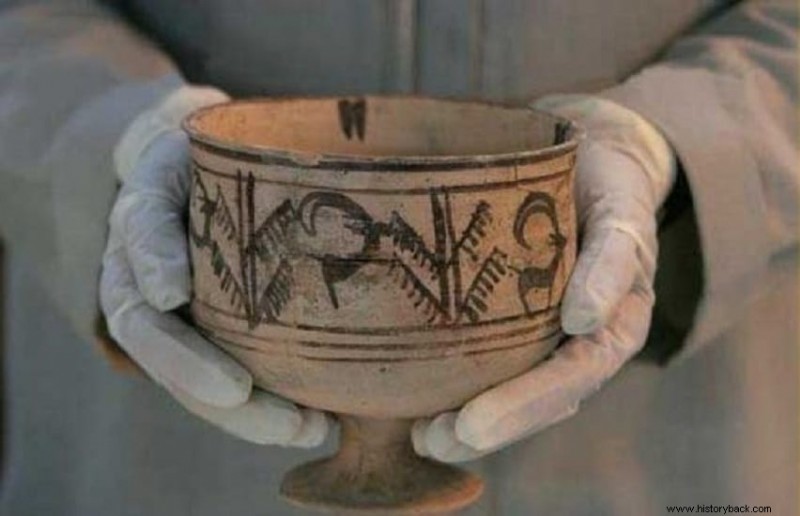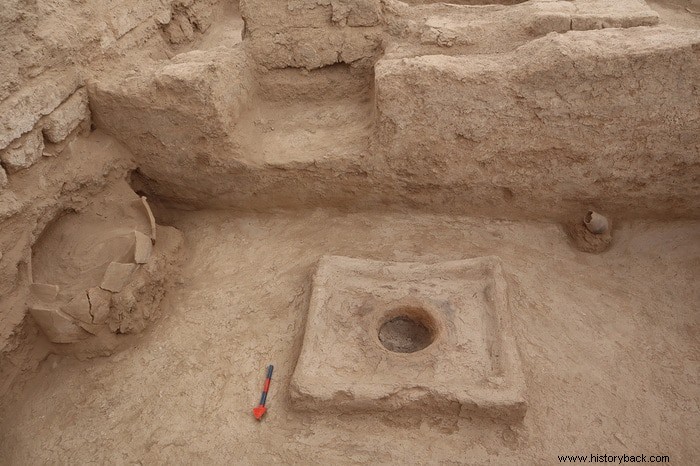Preserved thanks to the sand of the salty desert, one of the most inhospitable on Earth, the ancient city of Shahr-i Sokhta it would have arisen around 3200 BC in the province of Sistan-va-Baluchistan, in Southeast Iran .
The reasons for its disappearance under the desert sands as early as 2,300 BC are still unknown.
Surely the fault was not of a volcano as for Pompeii, but, according to scholars, the collapse occurred in a few decades and , according to the first paleo-botanical analyzes, the responsibility would be climate .

Not climate change, but because of its location , at the center of three climatic zones:Mediterranean, tropical and Siberian.
The city that emerged from the Shahr-i Sokhta desert, which means “burnt city”, was a thriving commercial hub.
The site covers an area of 200 hectares and is one of the oldest and largest cities in the world. More satellite citadels have recently been discovered near Shahr-i Sokhta, demonstrating its importance and centrality.

Its geographical position, not far from the borders with Pakistan and Afghanistan and in the middle of Central Asia is the main reason for its development.
The site has often been associated, from archaeological literature, to mythology Aratta which, localized from Mesopotamian texts "where the sun rises", rivaled the rulers of the 1st Dynasty of Uruk (including Gilgamesh ), masters of Sumer and custodians of kingship after the Flood.

Just the Deluge would have put an end to a series of dynasties with unreal longevity to allow, subsequently, that royalty could "descend from heaven" first in the city of Kish , and then, in fact, in that of Uruk .
The Sumerian Flood, whose stories inspired the editors of the biblical story, therefore, is intended as an element of separation between a mythical and historical time; a time, the post-diluvian one, in which history is made by kings.
In particular, Aratta , mentioned in the major Sumerian poems, is presented as a distant and difficult to reach place, fabulously rich, full of gold, silver, lapis lazuli and numerous other precious materials.

The city is also presented as the seat of the goddess Inanna , to which a temple completely built of lapis lazuli was dedicated. The vicissitudes of the city with the Sumerian kings will induce the goddess to choose Uruk , center of Mesopotamia southern, as his residence, handing over the kingship to Sumer and to the dynasty founded by Enmerkar and continued with Lugalbanda and the mythological Gilgamesh .
The memory of the city will remain alive in Mesopotamian literature so much so that it is remembered in the poems of Shulgi , king of Ur , and in other Paleo-Babylonian texts approximately dated to the nineteenth century BC.
Many wonders discovered in the " Pompeii of the East So far, if you consider that only 5% of it has been excavated on an area of 300 hectares. It is known that the buildings were up to two meters high, enriched by decorations on the walls representing geometric motifs.
From a tomb emerged a wooden example of the royal game of Ur , a sort of Backgammon, found together with the pieces and numerous slag and crucibles, the first indications of a metallurgical activity.
In 2006 the team of archaeologists unearthed what is considered the oldest ocular prosthesis in the world . It is a hemispherical object probably made with bitumen. And then, the so-called "proto-tablets", rather rudimentary clay rectangles, but with numerical annotations made of lines and points
Since 2014, Shahr-i Sokhta is included in the list of 'Unesco humanity for its “universal value”.
The link with Italy has always been very close. Suffice it to say that this ancient city was discovered in 1967 by the Italian archaeologist and explorer Maurizio Tosi , and has been excavated since 1970 , by an Italian mission led by the Italian Institute for the Middle and Far East (IsMEO).
Four laboratories of the University of Salento, funded by the Ministry of Foreign Affairs and private entities, headed by Enrico , are involved in the Italian-Iranian archaeological mission Ascalone , director of the project and the archaeological expedition led by Mansur Sajjadi for the Iranian Center for Archaeological Research.
